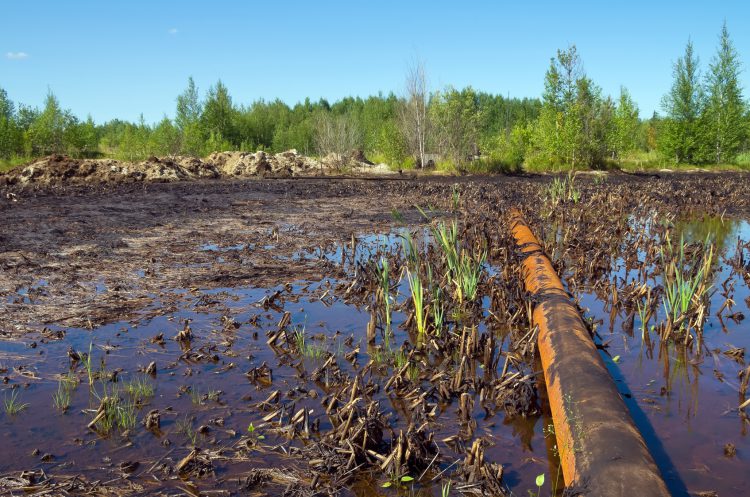Does Midwest Properties Ltd. v. Thordarson Mean an Expansion in Environmental Liability?

The Supreme Court of Canada recently denied leave to appeal the decision of the Ontario Court of Appeal in Midwest Properties Ltd. v. Thordarson.[1] Accordingly, the Court of Appeal's decision to award compensation under section 99 of the Ontario Environmental Protection Act ("EPA") stands. As a result, remediation costs which exceeded $1 million and the reduction in property value was determined to be the appropriate compensation in the circumstances.
Historically, there has been debate among the courts about whether diminution of property or remediation costs are the proper method for awarding damages. Given the outcome in Thordarson, the strategy for dealing with such claims will change. Environmental claims regarding contaminated property will now effectively always include a claim under s. 99, in addition to the traditional claims under negligence, nuisance, trespass and Rylands v. Fletcher.[2] Further, the strategy for responding to such claims will also change.
Overview
The defendants, John Thordarson and his company, Thorco Contracting, inappropriately stored waste petroleum hydrocarbons ("PHC"), which contaminated the soil and groundwater on their property. For many years, the defendants were almost constantly in breach of their approvals and compliance orders issued by the Ministry of the Environment and Climate Change. Groundwater migrated from the defendants' land onto adjoining property belonging to the plaintiff, Midwest Properties, and contaminated it with significant concentrations of PHC. Midwest launched a claim against Thorco Contracting and Mr. Thordarson based on three causes of action: (1) s. 99 of the EPA; (2) nuisance; and (3) negligence. The plaintiff was successful on all three actions at the Ontario Court of Appeal and was awarded full remediation costs, in addition to punitive damages for the defendants' egregious behaviour.
Remediation Cost or Diminution of Value?
In the Court of Appeal decision, Justice Hourigan discussed the debate between awarding damages based on restoration costs versus diminution in property value. At paragraph 70 the court concluded:
"... restricting damages to the diminution in the value of property is contrary to the wording of the EPA, the trend in the common law to award restorative damages, the polluter pays principle, and the whole purpose of the enactment of Part X of the EPA."[3]
This decision affirms the purpose of s. 99, which is to provide a flexible statutory cause of action that superimposes liability over the common law.[4] Justice Hourigan further notes that restoration costs may exceed the value of the property and, therefore, an award based on diminution in value may not be sufficient to fund the cleanup. As such, diminution in property value is no longer a cap on a claim of this nature. Further, as explained below, it is not necessary for the plaintiff to prove negligence as part of the claim.
Post Midwest, a plaintiff bringing a s. 99 claim only needs to prove that contamination has occurred. Fairness to, and fault of, the defendant are not relevant considerations under the legislative scheme of the EPA. Accordingly, once the plaintiff proves contamination, the defendant must demonstrate "that they took all reasonable steps to prevent the spill of the pollutant" to avoid liability. Taking all reasonable steps is a relatively difficult onus to meet and would require the defendant to provide sufficient evidence that its conduct was sufficient at each step in the chain of events. Were the underlying materials handling policies and training sufficient? Was spill response sufficient? As such, the availability of this cause of action provides an advantage to plaintiffs. For this reason, it is likely that s. 99 claims will be advanced with more regularity.
The Court of Appeal's stated intention was to ensure the restoration of the environment by making the plaintiff provide sufficient funding for the remediation of the contamination. However, it is unclear whether this intention will be satisfied - especially if the restoration cost exceeds the value of the property or even the reduction in the value of the property resulting from the contamination. A defendant will be incented to act in their financial interest which will likely change the litigation and settlement dynamics for environmental claims.
Projecting costs of remediation is, to say the least, very difficult to forecast. It is likely that future cases will not only have competing expert evidence on the origin of the claim, but now on the method and cost of remediation. As such, trials will potentially become longer and more uncertain.
What's to Come?
The availability of s. 99 under the EPA provides plaintiffs with the strategic advantage of not having to demonstrate negligence and not having damages capped by the impact on the market price of the property. As such, s. 99 claims will likely be advanced in effectively all environmental claims. This development will change the litigation and settlement strategy for cases of this nature.
However, questions still remain: Will a court always award damages on the basis of the cost to remediate? Are there situations where the decrease in property value will still be the proper measure? What is the onus on the defendant to mitigate?
[1] [2016] SCCA No 22.
[2] [1866] CCS No 66.
[3] 2015 ONCA 819 at para 70 [Midwest].
[4] Ibid at para 73.

